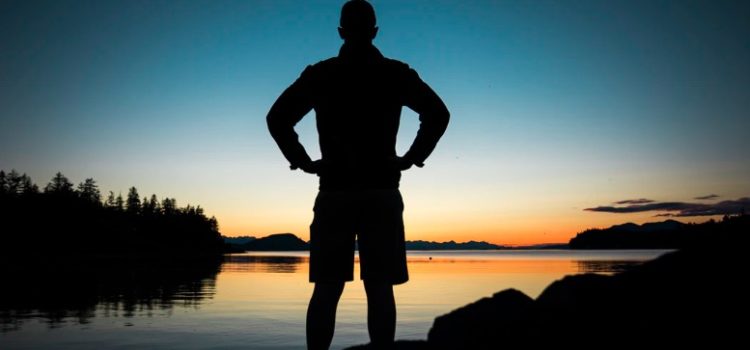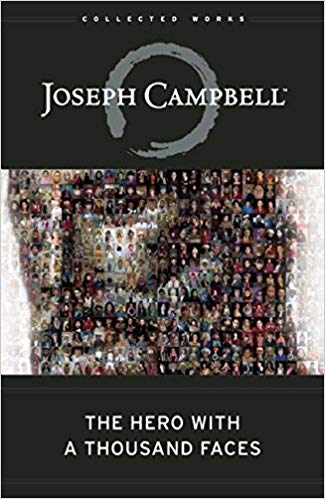

This article is an excerpt from the Shortform summary of "The Hero with a Thousand Faces" by Joseph Campbell. Shortform has the world's best summaries of books you should be reading.
Like this article? Sign up for a free trial here .
How many hero’s journey steps are there? What are they? Where did they come from?
In Joseph Campbell’s The Hero With a Thousand Faces, there are 17 hero’s journey steps. The Hero With a Thousand Faces is a journey through the world’s mythological traditions, from the ancient Egyptians, to the Romans, the Hindu and Buddhist legends of the east, and the folk-tales and foundation myths of the indigenous peoples of the Americas and Oceania.
We’ll cover the 17 hero’s journey steps and what happens in each stage of Campbell’s hero’s journey cycle.
Campbell’s Hero’s Journey Stages
Campbell’s book explores the common themes and story elements that define the world’s mythologies—though cultures are separated by vast gulfs of space and time, they all tell their stories in similar ways, using the same essential mythological template: the hero’s journey.
The Hero’s Journey
The archetypal myth is that of the hero’s journey, which details the exploits of an exalted figure such as a legendary warrior or king. But the hero can also start out as an obscure figure of humble origins, on the fringes of society. Frequently, this hero is born to lowly circumstances in a remote corner of the world and is the product of immaculate conception and virgin birth. Thus, they start out with some essential element of the gods already inside them.
The hero sets out on a journey to acquire some object or attain some sort of divine wisdom. This can be something material (like Arthur’s quest for the Holy Grail) or something with far greater spiritual weight (like the Buddha’s journey to find ultimate enlightenment). The hero undergoes great trials and tribulations during the course of their quest, undergoes a spiritual (and sometimes literal) death and rebirth, and transforms into an entirely new being. They gain new powers, and with those powers, achieve their goal—they receive the ultimate boon. They then return home to share this heavenly reward with their people—and in doing so, redeem all mankind.
Although the hero’s journey is often filled with daring exploits, the slaying of fantastical monsters, and unions with strange and beautiful goddesses, it is at heart a deeply introspective and inward-looking adventure, one with profound spiritual and psychological implications. Through their arduous trial, the hero learns new things about himself or herself and discovers hidden strengths that were dormant within them the entire time—in fairy tales, this is often made literal by the revelation of the hero to have been “the Chosen One” or “the King’s son.” These new (but latent) powers enable a thorough transformation of the hero’s outward being and psyche.
When viewed this way, mythology is deeply egalitarian. It tells us who we are and the rewards that await us if we would only set aside our focus on the day-to-day humdrum of life and embrace the hero’s journey. The hero, far from being just a literary character of long-dead civilizations, symbolizes the great godly potential within all of us.
The Hero With a Thousand Faces breaks down this mythological template of Campbell’s hero’s journey cycle even further and also explores the creation and destruction stories that mankind has told since before the age of recorded history, from cultures all over the world.
Hero’s Journey Step #1: The Call to Adventure
In the first part of the monomyth, we meet our hero, our “man of destiny,” and witness their call to adventure. The call to adventure can come about through chance, even a mistake or blunder, which introduces the hero to a hidden world of possibility, guided by mysterious forces which the hero will come to understand through the course of their journey.
A frequent device employed in mythology is that of the herald or conjurer, the (often unlikely) figure who reveals the hero’s destiny and spurs them to action. The herald represents our subconscious, wherein all of our darkest fears are hidden. They are forcing us to confront things that we do not want to. As such, the herald is frequently a grotesque or unpleasant-looking figure, like a frog or a beast, or otherwise some veiled, mysterious, or unknown figure.
Hero’s Journey Step #2: Refusal to the Call
A common feature of the monomyth is the hero’s refusal of the call, an initial reluctance to follow the steps of their destiny. In folk tales and myths across the world and throughout history, this refusal amounts to a selfish impulse to give up one’s narrow, immediate interests in the pursuit of spiritual awakening or even the salvation of the universe. In psychoanalytic terms, the refusal represents the clinging to infantile needs for security. Thus, the mother and father are the figures preventing true growth and transformation as the ego fails to develop and embrace the world outside the nursery.
The refusal can have grave consequences, both for the hero and for the wider world.
- In One Thousand and One Nights, a collection of medieval folk tales from the Middle East, a Persian city is turned to stone by the wrath of Allah—punishment for the refusal of the people of the city to heed the call of God.
- In the Book of Exodus, Lot’s wife is turned into a pillar of salt for looking back on the burning cities of Sodom and Gomorrah, which she had been commanded by God not to do.
Hero’s Journey Step #3: Supernatural Aid
Some heroes respond to the call immediately. They are then guided along the path of adventure by a supernatural helper, as part of their first steps along the hero-journey. This helper is the personification of destiny. Often, this figure takes the form of an old man or old woman, like the fairy godmother, wizard, shepherd, smith, or woodsman figures of European fairy tales. But it can also take on other forms, like that of the Virgin Mary in many Christian saints legends from the Middle Ages. In the ancient mythology of Egypt and Greece, this figure was the boatman or ferryman, the conductor of souls to the afterworld—Thoth in Egyptian lore and Hermes-Mercury in Greek legend.
Hero’s Journey Step #4: Crossing the Threshold
With this aid and guidance in hand, the hero sets off on their adventure until they come to a point where they are further away from the world of comfort and familiarity than they have ever been before. Ahead of them lies the danger of the unknown. On an individual level, this aspect of the heroic monomyth parallels the dangers and uncertainties of growing out of childhood and away from the protection of one’s parents.
It is at this point that the hero meets the guardian of the threshold, who stands between the worlds of the known and the unknown. This guardian is often a fearsome and monstrous figure, who represents our fears of leaving our comfort zone and stepping out into the world beyond. The hero must overcome this obstacle, just as we all must overcome our fears of the unknown if we are to thrive and grow as human beings in the great adventure of life. Only those with competence and courage can overcome the danger.
Hero’s Journey Step #5: Belly of the Whale
Next comes one of the most potent symbols of the hero’s death and rebirth—the common motif of the hero being inside the belly of the whale. This belly symbolizes the womb (also a temple); the darkness within represents death; and the hero’s emergence parallels the act of birth (or rebirth).
As we mentioned above, the hero-story is always one of self-annihilation. This obliteration of the hero’s old form and the transformation into something new is akin to the act of a worshiper entering a temple. When we enter a sacred space—whether church, mosque, Shinto shrine, or pagan grove—we are leaving the confines of the familiar world and undergoing our own metamorphosis.
Hero’s Journey Step #6: The Road of Trials
Now we move into the main action of the myth, wherein the hero undergoes a series of trials and tests, with the aid of their supernatural helper. The hero might also discover the existence of a benevolent, omnipotent power guiding all things in the universe. In mythology, the hero’s journey often requires entering the underworld or the land of the dead.
Hero’s Journey Step #7: The Meeting With the Goddess
The ultimate adventure often comes through the marriage of the hero to the goddess. The goddess is the epitome of beauty and represents the feminine ideal in all its aspects—mother, sister, mistress, and bride. She is the ultimate hope for the hero, assuring him that he will be returned to the blissful world he knew before the journey. This is the classic maternal goddess figure, the “good” mother.
Hero’s Journey Step #8: Woman as Temptress
But there is also a dark twist on this theme. For there is a “bad” mother figure, a goddess who attempts to either harm the hero, spurn his advances, hamper him in his quest, or tempt him into desire.
Hero’s Journey Step #9: Atonement With the Father
In keeping with the Oedipal themes that run so strongly throughout so much mythology, the figure of the father-god is often a fearsome ogre whom the hero must either overcome or reconcile with. This echoes the psychological rivalry and subconscious hatred that Freudian psychoanalysts believe so many children (particularly young men) feel toward their fathers. The father is the archetypal enemy, because he is the original intruder who enters the infant’s life after the serenity and union with the mother (goddess) in utero. In Freudian terms, one cannot live a peaceful and productive emotional life as an adult without resolving these deep-rooted childhood conflicts.
Hero’s Journey Step #10: Apotheosis
After conquering their fears, the hero at last achieves their long-sought enlightenment. They have shattered the bounds of consciousness and reached a divine state. Mythological and religious traditions throughout history and across the world teach us that this power lives within us all—we achieve it through our own herohood.
Hero’s Journey Step #11: The Ultimate Boon
In this stage of the hero’s journey, the hero achieves their goal and is reborn as a superior being. This is often shown by the ease with which the hero is now able to obtain the things that they seek. In the Irish legend of the Prince of the Lonesome Island, the hero is rewarded by being able to eat from a table with food that automatically replenishes, freeing him from hunger and want—he has achieved limitless bounty, indestructible life, the Ultimate Boon.
The Ultimate Boon is variously represented across mythological traditions—the inexhaustible milk of Jerusalem in the Book of Isiah, the Olympian gods feasting forever on ambrosia, the Japanese gods drinking sake, the Aztec deities of pre-Columbian Mexico consuming the blood of humans. The hero seeks the grace of the gods, their energy substance, their elixir of impenetrable being.
Hero’s Journey Step #12: Refusal of the Return
Sometimes, mythology records a hero unwilling to return to the world. Just as they may have refused the initial call to adventure, so they may refuse their duty to return home and bestow their newfound wisdom upon the rest of humanity. Even the Buddha, after his victory at the Tree of Enlightenment, doubted if it was even possible to bring the joy of true enlightenment to other mortals. It is tempting for the hero to simply turn away from the world and reside forever in Paradise.
Hero’s Journey Step #13: The Magic Flight
If the hero has won the Ultimate Boon through trickery or manipulation of the gods, their return home may be marked by a chase as the gods seek to regain the elixir that has been stolen from them. Sometimes, the hero will use decoys to delay or confuse the pursuer.
Hero’s Journey Step #14: Rescue From Without
Sometimes, the hero will require aid from a third party in order to return home from the realm of the supernatural. The hero, indeed, may need to be rescued himself.
Hero’s Journey Step #15: The Crossing of the Return Threshold
Now, at last, the hero returns to the ordinary world with their divine boon in hand. The hero’s journey has been an exercise in uniting the world of the unknown with the world of the known—for the two are mirror images, opposite sides of the same coin. The challenge now is to communicate to the ordinary world the wisdom and enlightenment that the hero has learned in their quest to the land of the gods. One of the hardest things for the hero to accept is the reality of the sorrows and banalities of ordinary human existence.
Hero’s Journey Step #16: Master of Two Worlds
The true hero is one who can move seamlessly between the two worlds, without destroying or compromising either. We see this in the Transfiguration of Christ from the New Testament, in which the body of Jesus becomes radiant with the glory and grace of God.
Hero’s Journey Step #17: Freedom to Live
The individual must embrace their own self-annihilation. These figures of ascetic self-denial are represented across the world’s religious traditions, from the wandering mendicants of the East, to the Wandering Jew and itinerant monks of medieval Europe. The manifestations vary, but the concept is universal.
———End of Preview———

Like what you just read? Read the rest of the world's best summary of "The Hero with a Thousand Faces" at Shortform . Learn the book's critical concepts in 20 minutes or less .
Here's what you'll find in our full The Hero with a Thousand Faces summary :
- How the Hero's Journey reappears hundreds of times in different cultures and ages
- How we attach our psychology to heroes, and how they help embolden us in our lives
- Why stories and mythology are so important, even in today's world






